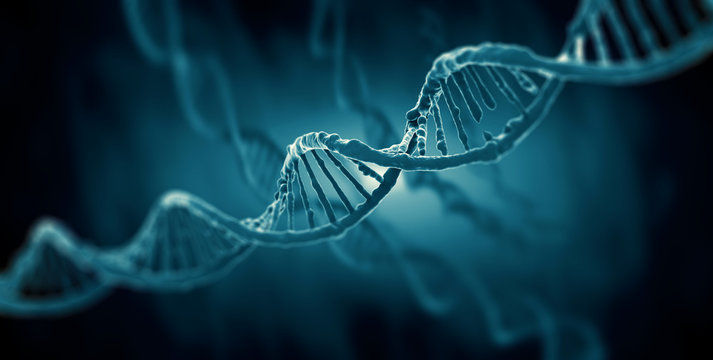Genomic Revolution: Unlocking the Chamber of Secrets within Our DNA
- Rianna Samsingh

- Feb 19, 2024
- 4 min read
Updated: Jun 10, 2024
The human genome is a beautifully complex arrangement of Deoxyribonucleic acid (DNA) that holds the specific instructions needed to construct each person on this planet. Genomic
revolution represents a pivotal moment in scientific history, where our understanding of genetics and its applications has undergone a profound transformation. From successfully decoding the human genome in 2003, to developing revolutionary gene-editing
technologies like CRISPR-Cas9, this journey has posed far-reaching implications across diverse fields, from healthcare and agriculture to conservation and beyond. With rapid
advancements continuing to unfold, the genomic revolution promises to redefine how we perceive and interact with the fundamental building blocks of life and learn to utilise our
understanding of them to our advantage.

DNA is made up of nucleotides, which consist of a phosphate group, the pentose sugar, deoxyribose, and one of four nitrogenous bases; adenine, cytosine, guanine or thymine. These nucleotides link together to form two strands of polynucleotides which then coil around each other due to the formation of weak hydrogen bonds between complementary nucleotide base pairs: adenine paired with thymine and guanine paired with cytosine.
Hence, DNA is made up of a double-stranded helix. A gene is a length of DNA on a chromosome that codes for a particular sequence of amino acids, to make a specific protein.
The human genome contains the information that characterises us as members of our species in 46 chromosomes, encoded in a sequence of three thousand million nitrogenous bases and contains about thirty thousand genes.
Initially, humans had first set out to attempt sequencing the human genome in a project known as the Human Genome Project in 1990. In 2003, they emerged victorious after 13 years and 3 billion US dollars spent. Today, the sequence of our genome can be obtained for only one thousand US dollars and has contributed heavily to the scientific community .
The ability to sequence the human genome has advanced healthcare, leading to significant improvements in the treatment and prevention of diseases.
By decoding the entirety of an individual's genetic blueprint, researchers and healthcare professionals can identify genetic
variations associated with diseases and tailor treatments to individual patients. For instance, in oncology, genomic profiling of tumours helps identify specific genetic mutations driving cancer growth. This knowledge enables oncologists to prescribe targeted therapies that block the activity of these mutations, leading to more effective treatment outcomes and reduced side effects compared to traditional chemotherapy. Additionally, genomic
sequencing enables proactive healthcare interventions aimed at disease prevention and early detection. By identifying genetic predispositions to certain diseases, individuals can adopt lifestyle modifications and undergo targeted screening to significantly decrease their susceptibility.
According to Johns Hopkins Medicine, genetic variants in BRCA1 or BRCA2 genes indicate a higher risk of breast and ovarian cancer. These mutations promote a 45-85% lifetime risk of breast cancer and a 10-46% risk of ovarian cancer.
Genomic revolution cannot be discussed without mentioning one of the most game-changing gene editing tools ever developed. CRISPR-Cas9, operates based on a natural defence mechanism found in bacteria to combat viral infections. "CRISPR" stands for Clustered Regularly Interspaced Short Palindromic Repeats, which are short, repeated DNA sequences found in bacterial genomes. Adjacent to these repeats are "spacer" sequences derived from
past viral infections. When a bacterium is infected by a virus, it captures snippets of the viral DNA and integrates them into its own CRISPR array as new spacers. These spacers serve as a
molecular memory of past infections. The Cas9 protein is an enzyme that acts like a pair of molecular scissors. It scans the bacterial DNA, in search of sequences that match the spacer
sequences in the CRISPR array and once a match is found, Cas9 binds to the target DNA and cuts both strands, effectively disabling the invading virus.
In genome editing applications, scientists have repurposed the CRISPR-Cas9 system to precisely target specific DNA sequences in any organism, including humans. This is achieved by designing a single-guide RNA (sgRNA) that directs Cas9 to the desired location in the genome. The sgRNA is designed to complement the target DNA sequence, guiding Cas9 to the correct location for editing. Once Cas9 binds to the target DNA sequence guided by
the sgRNA, it creates a double-strand break (DSB) in the DNA. The cell's natural repair mechanisms then kick in, leading to DNA repair. By harnessing these repair mechanisms, scientists can introduce specific genetic modifications, such as gene deletion, insertion, or correction.
While it may prove an invaluable asset, public opinion on the ethics of gene editing is diverse and often contrasting. Some view genetic technologies as promising solutions to medical and
agricultural challenges, offering hope for disease prevention. Conversely, others express concerns about ethical implications, including genetic discrimination, loss of biodiversity, and
unforeseen consequences of gene editing. The debate highlights the need for informed dialogue and careful consideration of ethical, social, and environmental implications.
In conclusion, the genomic revolution, propelled by advancements in biotechnology and computational sciences, has reshaped our understanding of genetics, health, and
evolution. With technologies like CRISPR-Cas9 enabling precise gene editing, they promise cures for genetic diseases and effective personalised treatments. Ethical considerations arise
with concerns about maintaining biodiversity, environmental impacts and discrimination. Nevertheless, the genomic revolution holds immense promise, offering unprecedented opportunities to improve human health and address pressing global challenges.
Welcome to the genomic revolution-https://www.ted.com/talks/richard_resnick_welcome_to_the_genomic_revolution?language=en
The genome revolution: what does it consist of?-https://www.bbva.ch/en/news/the-genome-revolution-what-does-it-consist-of/
Making Sense of the Genomic
Revolution-https://www.americanscientist.org/article/making-sense-of-the-genomic-revolution
Inherited Cancer Risk: BRCA




Comments